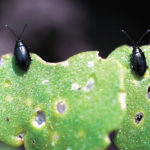When things are bad, the humour usually gets dark. Such is the case with Chris Allam, a farmer near Edmonton, who is dealing with severe insect pressure in his canola this spring. “(I’m) thinking the Chinese should change their zodiac sign of 2019 to the year of the cutworm or flea beetle. (We) might have […] Read more
 Crop Management
Crop Management
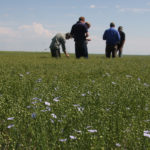
Grain World crop tour back for second year
Need a break from the farm? Interested in a two-day road trip through the Prairies? Wondering how the crops are looking beyond your own North 40? Then the 2019 Grain World Crop Tour might be just what the doctor ordered. The Grain World Crop Tour is back for a second consecutive year in 2019. It […] Read more

Payment program not finalized
Western politicians and farm leaders were not happy to hear that changes to the Advance Payments Program could be months in the making. Federal Agriculture Minister Marie-Claude Bibeau was asked during a recent conference call organized by the Canola Council of Canada when new regulations changing the APP limit to $1 million and the interest-free […] Read more

U.S. releases clear stance on glyphosate
Len Ritter has been a toxicologist for more than four decades and during his career he’s read thousands of reports on pesticides. But when the United States Environmental Protection Agency recently said that “glyphosate is not a carcinogen”, Ritter was stunned by the tone and language in the report. “Regulatory agencies are never that clear… […] Read more
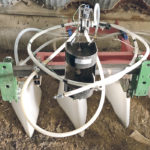
Resist: spray between the rows
Like the plague, herbicide resistance is spreading to more chemistries, more crops and more fields. There’s no magical new herbicide over the horizon to conquer this scourge upon the land. Researchers around the globe are fiercely focused on finding ways to break the hold herbicide resistance has on the world’s farmers. But, with no chemical […] Read more
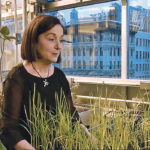
Rice gene response to water and nutrients discovered
Researchers at New York University have discovered how each gene in the rice genome senses and responds to combinations of water and nutrients. The finding could lead to ways to engineer rice crops to grow in various soils that now may be marginal, too dry, or lack the necessary nutrients to sustain rice growth. Rice […] Read more
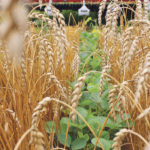
Hold the beans down boys, here comes the combine
More farmers are trying intercropping for the first time in 2019. Growing two or more crops side-by-side in the same field, at the same time has a number of benefits: More crop cover for a longer time period helps re-duce soil erosion risk. A diverse rotation with more different crops helps break cycles of disease, […] Read more

Frost boils push mineral nutrients to soil surface
We’ve all seen a solid rock that’s been seamlessly broken in two by some invisible force. The movement of rocks and soil are controlled by freeze and thaw events, creating mounds, organizing rock circles and cracking the rocks themselves. These phenomena are macro views of the freeze-thaw cycle that naturally occurs in soil. As demonstrated […] Read more
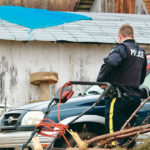
Conservatives want action on rural crime
Members of the federal Conservative party are urging Ottawa to take rural crime more seriously, arguing that the Liberal government is failing to offer concrete solutions. Speaking in Edmonton May 23, Lakeland MP Shannon Stubbs said rural crime is not a priority of the federal Liberals, pointing to a recent Public Safety Committee report that […] Read more
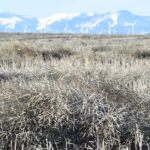
Net farm incomes drop by 45 percent in 2018
Net incomes on Canadian farms dropped by a whopping 45 percent in 2018, the largest annual percentage decrease since 2006, according to Statistics Canada. Realized net farm income — which is defined as the difference between farm cash receipts and operating expenses, minus depreciation plus income in kind — dropped 45.1 percent in 2018 to […] Read more

 Crop Management
Crop Management